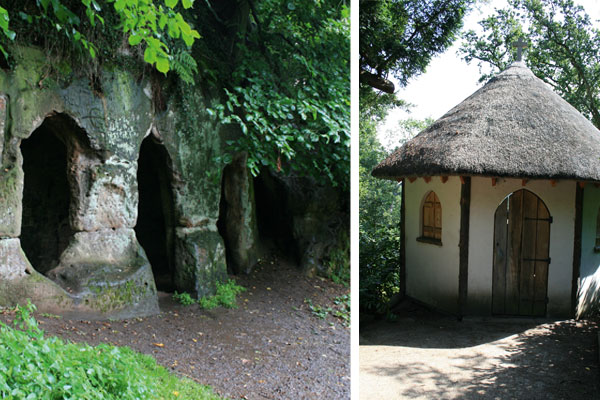In his 1780 essay On Modern Gardening Horace Walpole declared that of the many ornamental features then fashionable, the one ‘whose merit soonest fades’ was the hermitage. Inspired by the ancient cells of genuine religious anchorites, but largely decorative, garden hermitages had flourished in Britain during the 18th century. While some were appropriately primitive in design, others had Gothick doorways and windows filled with stained glass, floors made of pebbles or sheep’s knucklebones arranged in elaborate patterns, ceilings ornamented with pine cones, rustic furniture made from elm boles ‘distorted by fungal disease’, and inscriptions carved in stone to aid philosophical reflection.
Walpole may have found it ‘almost comic to set aside a quarter of one’s garden to be melancholic in’, but this had suited the sensibility of the age. Withdrawing from the world, if only to spend the afternoon in enjoyably gloomy reflection before returning to the main house for a proper dinner, held huge appeal in an age during which Milton’s ‘Il Penseroso’ had become a literary touchstone.

Get Britain's best politics newsletters
Register to get The Spectator's insight and opinion straight to your inbox. You can then read two free articles each week.
Already a subscriber? Log in






Comments
Join the debate for just £1 a month
Be part of the conversation with other Spectator readers by getting your first three months for £3.
UNLOCK ACCESS Just £1 a monthAlready a subscriber? Log in